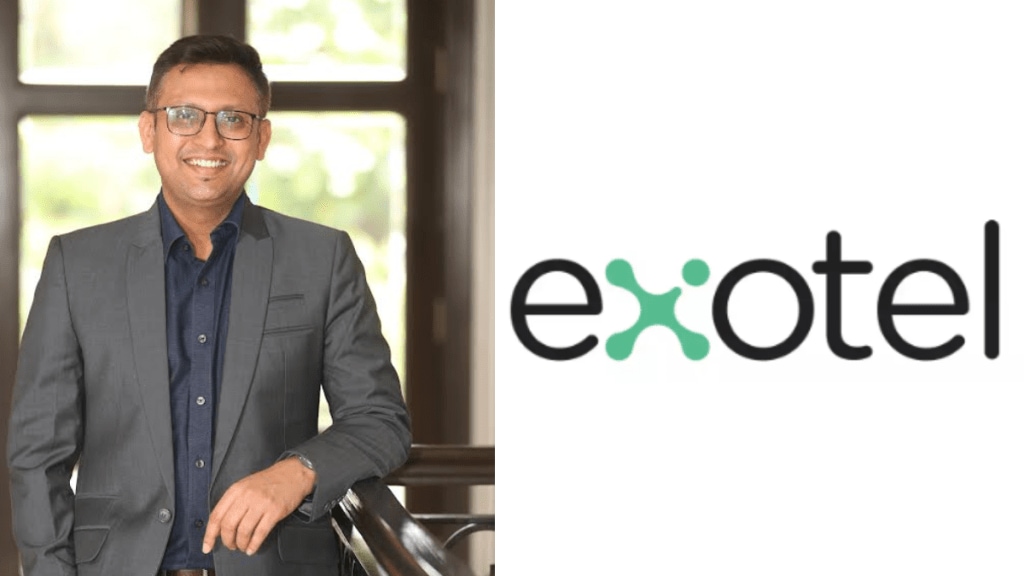The pandemic has brought about notable shifts across industries, and the case has been no different for marketing. Today, digital marketing has become a crucial aspect to acquire new customers and retain existing ones. In our weekly BrandWagon Ad Talk series, industry experts highlight what has changed over the past two years and more importantly, are these changes here to stay. Udit Agarwal, VP and global head of marketing, Exotel, talks to BrandWagon Online, about the dos and don’ts of digital marketing, best marketing campaigns, and more.
What is the difference between launching a brand in today’s digital era versus earlier?
The approach to launching a brand in today’s digital era has undergone a profound transformation. The shift is driven by significant advancements in technology, changes in consumer behaviour, and the increasing importance of digital ecosystems. The modern consumer operates in an experiential economy, expecting more than just products—they seek meaningful engagement and immersive experiences. This has shifted the focus from exposure to experience, making every brand interaction an opportunity to add value to the customer journey.
In India, rapid internet and smartphone penetration demands a seamless, omnichannel brand presence. However, with increasing digital noise and decreasing attention spans, brands must deliver precise, impactful communication.
Today’s brand launches are no longer static, one-time events but dynamic, iterative processes. By prioritising experience, omnichannel engagement, and data-driven agility, brands can create meaningful, lasting customer connections that drive sustained loyalty.
What are the recent best marketing or advertising campaigns you have seen and why?
One of the standout campaigns recently has been HubSpot’s ‘Grow Better’ initiative. It’s not just about promoting their product but about fostering customer success and sustainable growth, which resonates deeply in the SaaS and tech space. They’ve effectively used storytelling and customer advocacy to connect with their audience on a personal level.
Closer to home, Zomato’s quirky and relatable ad campaigns have been exceptional in building brand recall and engagement. Their ability to stay culturally relevant while delivering clear messaging is something every marketer can learn from.
Which brand in the last year has made the best use of digital and how?
Zomato has effectively leveraged digital marketing to create campaigns that are contextual, culturally resonant, and rooted in everyday experiences. Their use of vernacular language allows them to connect authentically with audiences across India’s diverse linguistic landscape. By incorporating real-life scenarios, they ensure that their messaging feels relatable and memorable, fostering a strong emotional connection with consumers.
What sets them apart is their ability to identify and creatively highlight moments that resonate universally, such as meal-time decisions or cravings. This focus on cultural relevance not only drives engagement but also reinforces brand recall.
Zomato’s approach highlights the importance of precision in digital marketing—creating content that cuts through the noise while remaining relatable. By combining cultural nuance with clear, impactful messaging, Zomato exemplifies how brands can use digital channels to engage meaningfully and build lasting connections in a fast-paced, competitive landscape.
In a post-Covid world, what are the dos and don’ts of digital marketing?
The post-Covid era has transformed digital marketing, requiring brands to prioritize agility, authenticity, and data-driven decision-making. One key “do” is to pilot campaigns on smaller audiences before scaling up. This approach allows for quick adjustments to creative and messaging, reducing the risk of large-scale failures.
Another crucial shift is the growing role of measurement tools. With the rise of attribution models, automation, and campaign metrics, measurement is now embedded across every aspect of digital marketing. These tools enable brands to track effectiveness, course-correct in real-time, and make data-driven decisions.
Content has also evolved, with short-form video formats on platforms like YouTube, Instagram, and TikTok becoming dominant. Video-based storytelling drives higher engagement, while influencer marketing enhances authenticity, building stronger consumer trust.
Brands must avoid “big bang” launches without testing, neglecting measurement, and creating overly polished, inauthentic content. Overlooking authenticity can also harm brand trust, as consumers today seek relatable and humanised messaging. To stay ahead, brands must embrace a test-and-learn approach, prioritise authenticity, and use measurement tools to remain agile and effective.
One recent bad case of advertising you have seen, and why?
One recent example of poor advertising was the backlash faced by some brands during festive campaigns for being culturally insensitive or tone-deaf. For instance, campaigns that fail to consider the sentiments of their target audience can do more harm than good, no matter how creative they are.
In today’s landscape, authenticity and empathy are key. Missteps often occur when campaigns prioritize virality over understanding the audience’s cultural and emotional context. It’s a reminder for all marketers to ensure their messaging aligns with their audience’s values and sentiments.

